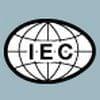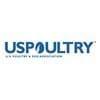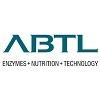Explore all the information on
Poultry egg quality
Egg quality defines those characteristics of an egg that affect consumer acceptability and preference. Components of quality include shell quality and interior egg quality for shell eggs, and interior egg quality for further processed eggs. The quality of the egg once it is laid cannot be improved. Hence, its maintenance is mostly a preventive process. Egg quality is influenced by several factors including rearing, temperature, humidity, handling, storage, and egg age. Shell quality: There are five major classes of shell defects: integrity, texture, shape, color, and cleanliness. Internal egg quality involves functional, aesthetic and microbiological properties of the egg yolk and albumen. The proportions of components for fresh egg are 32% yolk, 58% albumen and 10% shell. Regarding exterior egg quality, the shell of each egg should be smooth, clean and free of cracks. The eggs should be uniform in colour, size and shape.
Dr Pooja Bhardwaj, General Manager at Lavizen Health Care, highlights how lower temperatures and shorter daylight hours in winter reduce egg production and quality in layer birds, making artificial lighting essential to maintain hormonal balance. ...
Comments : 0
Recommendations: 0
Julian Madeley, Director General at the World Egg Organisation, speaks about the upcoming WEO Business Conference on 19–21 April 2026 in the vibrant city of Warsaw, Poland. Known for its modern energy and rich history, Warsaw provides an ideal setting for industry leaders to connect, exchange ideas and engage with WEO’s forward-looking programme designed to shape the future of the global egg sector. ...
Comments : 0
Recommendations: 1
Julian Madeley, Director General at the World Egg Organisation, shares why eggs remain one of the most powerful nutritional foods worldwide and highlights the projected 21% global growth in consumption over the next decade. Speaking from Poultry India in Hyderabad, he explains why India—already the world’s second-largest and fastest-growing egg market—is set to drive a quarter of this global expansion. ...
Comments : 0
Recommendations: 0
Dr. Atul Rajput, Managing Partner at AR Enterprises, shares two decades of perspective on India’s rapidly evolving poultry industry. From post-COVID shifts in consumption to the rising urgency of protein education, he explains the challenges, opportunities, and more.
...
Comments : 0
Recommendations: 0
Dr. Debaraj Das, consultant and management advisor, breaks down why 2025 became one of the toughest years for poultry: oversupply, falling prices, and heavy losses. He explains the stalled growth in protein consumption and why 150 eggs per capita remains unlikely. ...
Comments : 0
Recommendations: 0
Dr. Abhijit Mishra, a poultry nutrition consultant with 23 years of experience, outlines the key challenges in India’s fast-growing broiler, breeder and layer sectors—disease pressure, raw-material quality and management. He notes that modern tools like sensors, NIR and advanced software remain underused. With rising protein demand and eggs as the most affordable source, he believes India will comfortably exceed future per-capita egg targets. ...
Comments : 0
Recommendations: 0


Effects of DON and antidote on pro-inflammatory mRNA expression of broiler
Suggested link
Professor Dr. P. K. Shukla, President of the Indian Poultry Science Association and one of the country’s leading voices in poultry science, breaks down the major forces shaping India’s poultry sector. ...
Comments : 0
Recommendations: 0
Prof. Dr. AS RANADE breaks down India’s toughest year of mortality and disease impact. He explains why egg consumption must rise and which technologies remain underused in nutrition. ...
Comments : 0
Recommendations: 0
Mr. Suresh Chitturi, Vice Chairman & Managing Director of Srinivasa Farms, shares his perspective on the critical role elite genetics play in India’s poultry production. He also highlights the key opportunities ahead and the challenges the industry must address to sustain its growth. ...
Comments : 0
Recommendations: 2
In this Engormix interview, Nath Morris, President of U.S. Poultry & Egg Association, shares his expectations for IPPE 2026. ...
Comments : 0
Recommendations: 1


Innovative Directions in Aflatoxin Testing Point to Measureable Gains in Quality Of Lab Data
Suggested link
Mr. O. P. Singh, Managing Director at ABTL, presents Hello Protein as a national mission to close India’s protein gap by promoting chicken and eggs as affordable, high-quality nutrition. ...
Comments : 0
Recommendations: 0
Mr. O. P. Singh, Managing Director at ABTL, shares key insights from Poultry Knowledge Day and calls on current and future poultry leaders to work with unity, one voice, and a shared mission to elevate India’s industry. ...
Comments : 0
Recommendations: 0
.jpg&w=3840&q=75)

The impact of extruded soybean processing temperatures conditions on broiler’s ileal and cecal microbiota
Suggested link
The introduction of the W80 variety by Hy-Line International marked a turning point in the Egyptian poultry market with unmatched demand and performance. Hy-Line International has transformed how we see poultry quality today, continuing the legacy of excellence since MIPCO, led by Yasmine El Alaily, started importing Hy-Line breeds in 1987. ...
Comments : 0
Recommendations: 0
Aysum Yilmaz, Export Sales Manager at Garanti , explains their operations as egg producers working with Hy-Line since 2018. ...
Comments : 0
Recommendations: 0
In the rearing aviary, day-old chicks must have easy access to feed and water. The environment should offer an optimal temperature, appropriate lighting, and good ventilation. These conditions ensure that the chicks grow well, and their fluff transforms into well-developed feathers. As the chicks...
Comments : 0
Recommendations: 0
I. INTRODUCTION The laying hen has a considerable requirement for dietary calcium (Ca) and phosphorus (P) to support optimum egg production, egg quality and other physiological processes. In particular, a high intake of Ca ranging from 4 to 4.5% of the diet is considered important as the laying cycle progresses from early to late lay to achieve optimum egg number and egg shell quality. A capacity for birds to increase Ca intake from a separate Ca source as dietary Ca levels diminish...
Comments : 0
Recommendations: 0
Feed represents 65-75% of total production cost while energy represents approximately 50% of the diet cost. Apparent metabolisable energy corrected to zero nitrogen retention (AMEn) is most commonly used in poultry feed formulation. AMEn, however, does not consider energy lost during digestion as heat increment (HI). AMEn minus HI gives net energy (NE) which is energy available to the bird. An equation to predict net energy for production of ingredients for layers has been developed at UNE....
Comments : 0
Recommendations: 0
I. INTRODUCTION Alternative rearing systems are becoming increasingly important mainly because of growing public concerns about intensive systems. Regulations have been established in some countries to restrict or ban the use of conventional systems. The European Union banned the use of conventional battery cage systems in 2012 and alternatively, new enriched colony cages, free range production systems or barn systems have been introduced as substitutes (Leinonen et al., 2014). As a...
Comments : 0
Recommendations: 0
The environment in which a laying hen is reared can have long-term impacts on their behaviour, health and welfare later in life (Janczak and Riber, 2015). Alternative housing systems for layers provide access to larger areas and allow greater expression of behavioural repertoires, leading to positive acceptance by consumers. But the complexities of alternative systems can also place greater physical and behavioural demands on the birds, leading to increases in skeletal injuries or inter-bird...
Comments : 0
Recommendations: 0
I. INTRODUCTION Contamination of eggshells by Salmonella Typhimurium is a major public health and food safety issue to the Australian poultry industry. In Australia, the majority of the egg and egg related foodborne outbreaks are caused by S. Typhimurium (The OzFoodNet Working group 2015). Biofilm formation is one of the survival mechanisms utilised by Salmonella spp. against physical and chemical stress factors in the environment (Steenackers et al. 2012). A biofilm is a...
Comments : 0
Recommendations: 0






















.jpg&w=3840&q=75)











